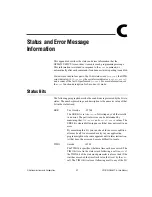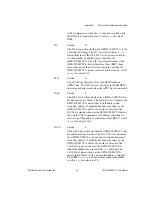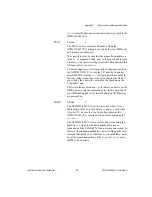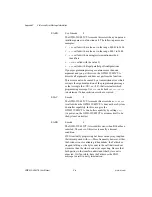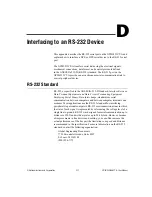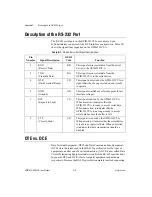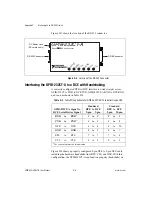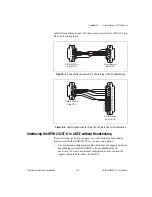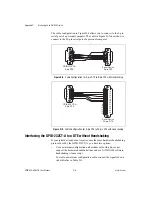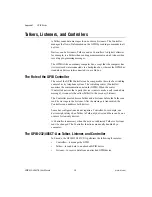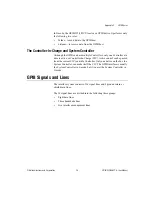
Appendix D
Interfacing to an RS-232 Device
©
National Instruments Corporation
D-7
Custom Cables
If your application requires a custom cable, you can construct one if you
have a thorough knowledge of the handshaking protocols involved. Review
the RS-232 characteristics of your serial device and build the cable to
properly connect the handshake lines of the two devices. Because the
DTE-to-DCE connection is a straight across connection, it often involves
only connecting RTS to RTS, CTS to CTS, DTR to DTR, and so on. If the
documentation for your serial device does not provide a thorough
explanation of its handshaking protocol, the ANSI/EIA-232-D standard is
a good reference, provided your device conforms to the RS-232 protocol.
Caution
Although handshaking might not be required, it is best to use some form of
handshaking to prevent loss of data.
Interfacing the GPIB-232CT-A to a DTE with Handshaking
For serial devices set up as DTEs, you must wire a DTE-to-DTE interface
cable, commonly known as a null modem cable. The cable allows the
GPIB-232CT-A to act as though it is communicating with a DCE, but it
swaps the appropriate pins to achieve a DTE configuration. This wiring
configuration is shown in Table D-3.
Figure D-8 shows a typical 9-pin to 9-pin null modem cable with the RTS,
CTS, and DTR handshake lines implemented. Figure D-9 shows an
equivalent 9-pin DTE to 25-pin DTE cable configuration.
Table D-3.
Cable Wiring Scheme for GPIB-232CT-A DTE to Serial Device DTE
GPIB-232CT-A Signal to
DTE Serial Device Signal
Standard
DTE to DTE
9-pin
9-pin
Standard
DTE to DTE
9-pin
25-pin
RXD
to
TXD
1
2
to
3
2
to
2
TXD
to
RXD
1
3
to
2
3
to
3
DTR
to
DSR
4
to
6
4
to
6
GND
to
GND
1
5
to
5
5
to
7
RTS
to
CTS
7
to
8
7
to
5
CTS
to
RTS
8
to
7
8
to
4
1
The connections must be implemented.

